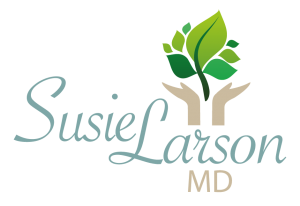The world is changing dramatically, and we must change along with it. Medicine has changed in two very important ways that reflect the demands nature and society have placed on it.
TELEHEALTH IS NOW
First, Telemedicine is no longer the wave of the future. It is NOW. Like social relationships that have transitioned to online meetings, so have medical services. Dr. Larson holds telemedicine appointments using a HIPAA compliant connection through her Electronic Health Portal. She was a pioneer in telemedicine, having used teleconference technology for several years over several platforms.
Not all video connections were created equal. They each have their pros and cons. Variations in connection reliability, portability, and security make the choice of platform important. When considering what kind of connection you want to have with your provider remember that unless it is compliant with the Health Information Portability and Accountability Act (HIPAA) the privacy of your health information may be compromised.
PERSONALIZED MEDICINE IS NOW
COVID-19 has brought to our attention in a dramatic way that while we are all the same, we are also different. Our vulnerability to infection and severity of disease varies with age, health status, and variables we have not yet discovered. People are aware of their individuality and want medicine that delivers to their unique needs. This pattern has been developing for some time but is now a driving force for change.
Dr Larson’s Functional Medicine practice offers a path to personalized care through cutting edge testing and attention to the specific needs of individuals. Those needs are uniquely expressed in an individual’s DNA. The new science of Genomic Medicine expands the opportunities for individualization in medical decision making beyond what can be accomplished with even the cutting edge Functional Medicine tests. To learn more about Personalized Medicine and Genomic Medicine contact Dr. Larson.
